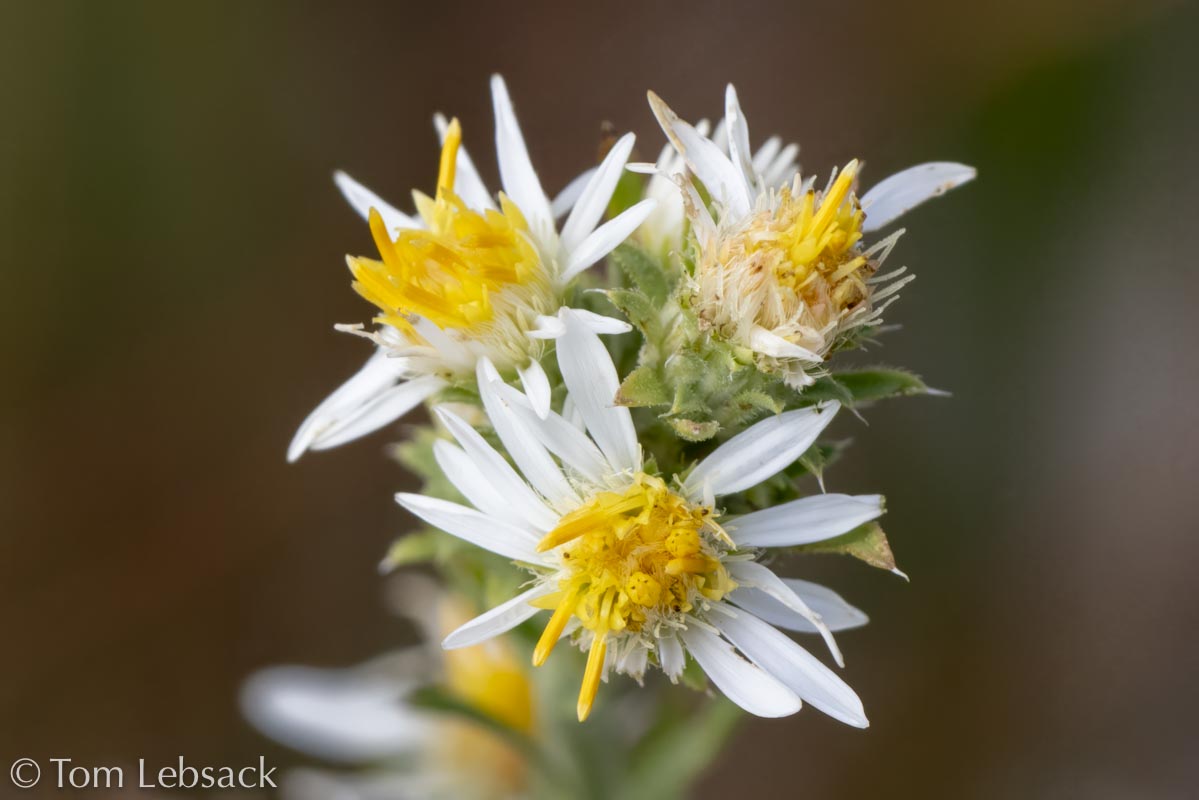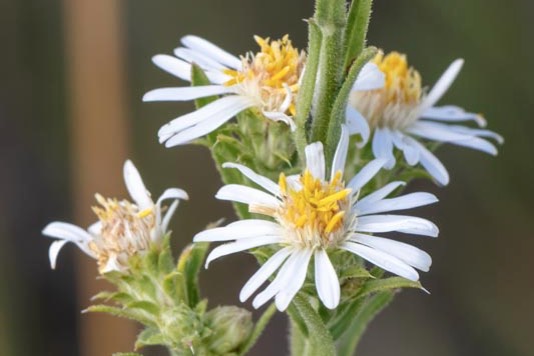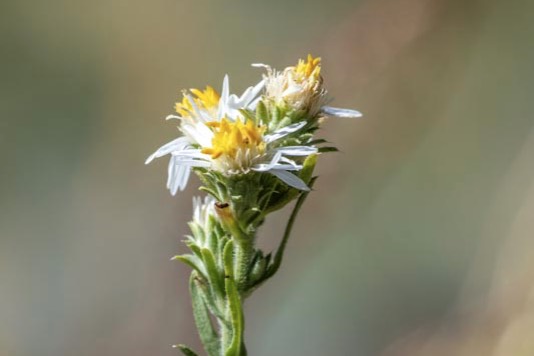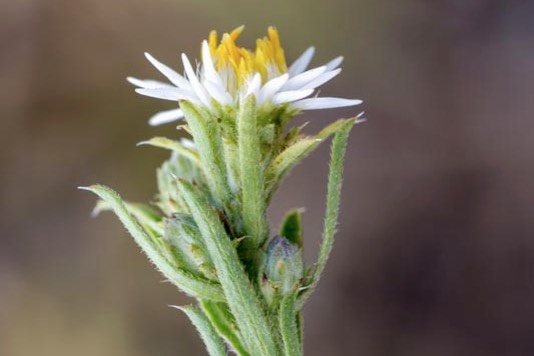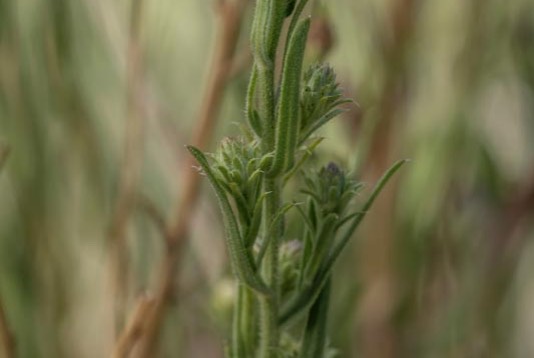(White Prairie Aster)
| Scientific Name | Symphyotrichum falcatum (Aster falcatum) | USDA PLANTS Symbol | SYFA |
| Common Name | White Prairie Aster | ITIS Taxonomic Serial No. | 522205 |
| Family | Asteraceae (Sunflower) | SEINet Reference |
Click Here |
| Description |
Life zones and habitat: Plains to Montane (3500 to 10000 ft.); dry sandy or rocky soils in grasslands, fields, meadows and roadsides. Plant: Colony-forming, erect perennial 8 to 32 inches tall; single or multiple, hairy stems from the base, initially green turning brown and woody. Leaves: Basal leaves withered by flowering time; stem leaves are linear to narrowly lanceolate, up to 3 inches long and less than 1/4 inch wide; sessile; margins are coarsely ciliate, surfaces are moderately to densely strigose (short, stiff hairs); tips have a white spine (acuminate); leaves become short and more crowded near flower heads. Inflorescence: Cylindrical clusters of composite flowers about 1 inch across with 17 to 35 white to light lavender rays and 18 to 30 yellow disk flowers that turn reddish with age; involucres are bell-shaped with 3 to 4 layers of unequal-length, reflexed, somewhat hairy phyllaries with acuminate tips. Bloom Period: July to October. References: "Flora of Colorado" by Jennifer Ackerfield, Minnesota Wildflowers, SW Colorado Wildflowers, American Southwest and Flora of North America. |
BONAP Distribution Map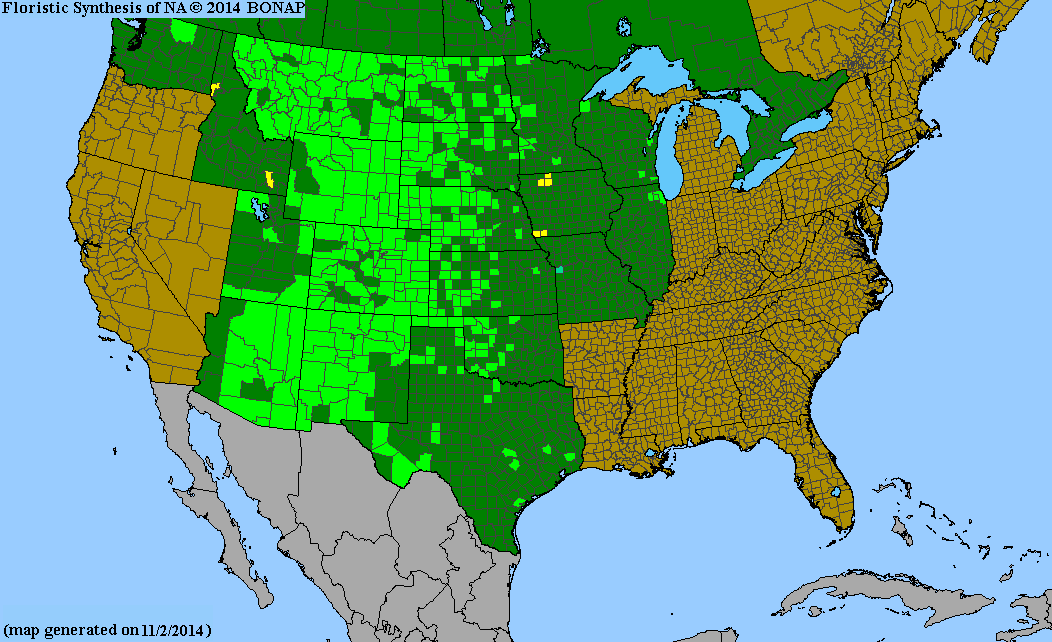 Map Color Key | Colorado Status: Native |
© Tom Lebsack 2025
Banner photo: Castilleja rhexifolia and a brewing storm over the San Juan Mountains
I try to provide accurate, up-to-date, and relevant information, but cannot guarantee the completeness or accuracy of any information presented on this website. I use authoritative references to insure high standards of accuracy and review and update the information frequently.
